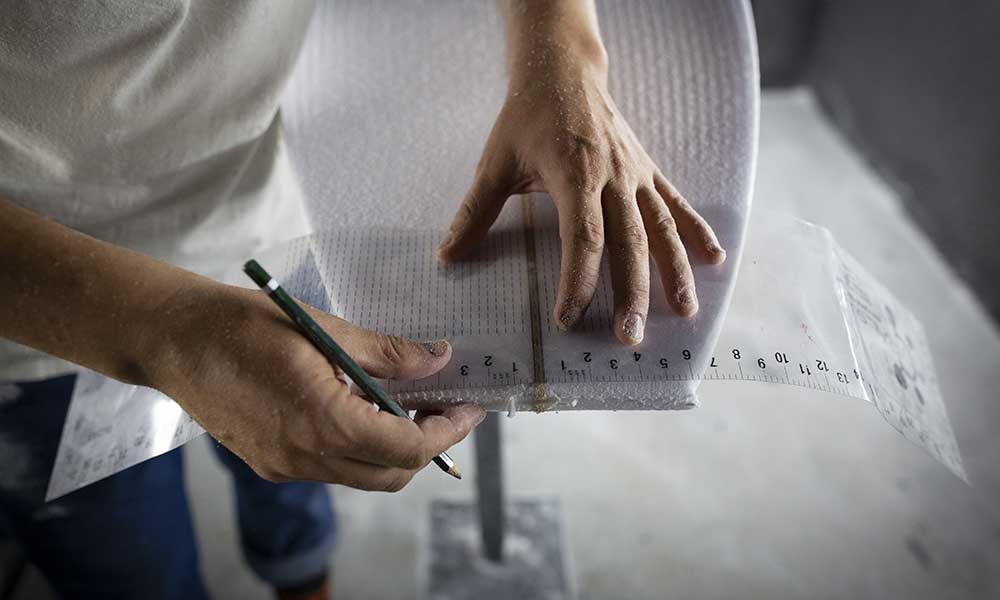A modern surfboard is designed to be buoyant, durable, lightweight, and fast.
It’s shaped to cut through the waves with ease and give the surfer maximum control, but if you alter this shape, you can alter the speed, drive, and maneuverability of the board.
The tail shape is a great example because with a few slight changes in the shape, you can completely change the feel of the board.
Tail Shapes: The Basic
A wider tail on a surfboard will give you more buoyancy, which allows for superior stability.
You will notice a faster planing speed and may also find it easier to stay in control of those tough and choppy waves, potentially making it a good choice for beginners.
A narrow tail makes it easier to roll the rails and should give you more hold on steeper waves.
There are benefits to both, and that’s before we factor the angles into the equation.
Speaking of which…
Different Surfboard Tail Shapes
Not only are there several different tail types, but there are also multiple versions of each, giving you lots of different options to choose from.
The most common tail shapes include:
Squash Tail
The Squash Tail is the most common.
It features a squarish tail and has rounded corners, providing some impressive hold while still offering plenty of width.
Square Tail
The Square Tail is similar to the Squash Tail, but it is sharper and squared-off.
These corners provide a pivot point, giving some sharp turning ability.
It is the more traditional option but is not as common as the Squash Tail, as the latter offers many of the same benefits with more hold.
Pin Tail
A good step-up option, the Pin Tail is great for big surf and can help intermediates to move up from options like the Squash Tail or Square Tail.
Round Tail
Ideally suited for bigger waves, the Round Tail gives you more width and provides control as you carve hollow surf.
Swallow Tail (AKA Fish Tail)
The Swallow Tail is very wide and gives improved planing speed.
It’s a good option for boards designed to tackle smaller waves.
Fish surfboards use this design and are very popular with beginner surfers and those looking for a fun step-up.
Asymmetrical Tail
A much less popular tail that is designed to provide varying levels of control for your heel side and toe side, amounting to an odd asymmetrically-shaped tail.
Which Tail Shape is Right for Beginners?
There are a lot of things to consider when buying your first surfboard.
You’ll need to think about the fin setup and the rails; fiberglass or epoxy, custom or off-the-shelf?
It makes things needlessly complicated and when you’re just starting out, it’s best to keep things simple.
The only thing you really need to focus on at that early stage is whether or not the board is big enough for your weight and your experience level, which usually means choosing a longboard over a shortboard.
As you gain more experience and start tackling bigger waves, you can think about surfboard tail shapes, fin placement, and all that other stuff, but for now, just keep things simple!







